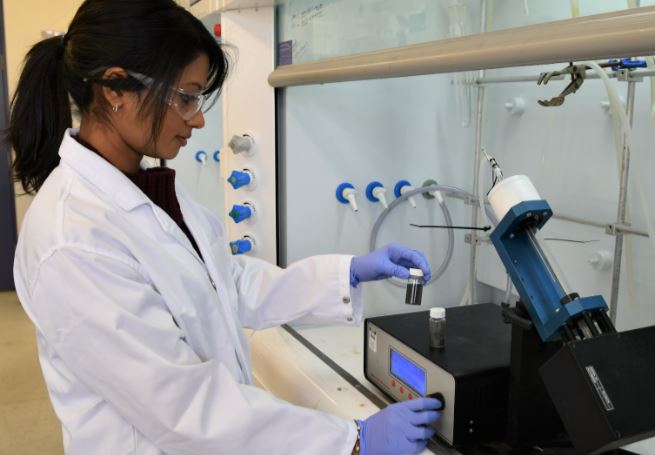
Progress is being made on developing more efficient lithium-ion batteries, with Flinders University researchers supporting work on a clean, green energy platform.
SA Scientist of the Year finalist Professor of Clean Technology Colin Raston and research associate Dr Kasturi Vimalanathan are using the Vortex Fluidics Device (VFD) developed at Flinders University to produce graphene-wrapped fullerene composite spheres which have the potential to be used as an “all carbon” energy storage material.
The project, led by 2D Fluidics Pty Ltd, a subsidiary of Australian Stock Exchange listed First Graphene, is researching alternative graphite products to traditional spherical graphite as a basis for developing graphite mines.
The company says graphene properties seem more advanced than those offered by graphite, and believes the Flinders University VFD has already shown the graphene fullerenes could be a suitable replacement for spheroid graphite used in anode manufacturing.
Professor Raston says the VFD process can optimise the size of the composite spheres, producing consistent size graphene/fullerene composite spheres < 1µm which have potential as improved energy storage anode materials.
He says that the research further highlights the versatility of the VFD, now being used to fabricate advanced material for the energy sector.
The Perth-based company’s manufacturing process aims to offer improvements in performance, which is a constant issue for battery manufacturers.
The fullerenes have potential to enhance both lithium-ion batteries and supercapacitors, it says, after lodging a global patent pending IP which is currently under national phase examination.

As with all of the other alternatives being worked on by a range of companies, the commerciality and scalability of the production process is dependent upon continuing research and development, says First Graphene managing director Craig McGuckin.
Spherical graphite (SPG) is a crucial ingredient to the efficient operation of lithium-ion batteries (LiB). Spherical graphite is the key component of the anode of a LiB which without, the LiB would not function. Historically SPG has been derived from flake natural graphite.
The global production of spherical graphite is currently dominated by China, which uses the mechanical shaping and hydrofluoric acid purification techniques to produce purified spherical graphite.
With the transition of the world to a clean, green energy platform, many LIB manufacturers are actively seeking alternative supply options that offer better efficiencies.
Along with Flinders University in Adelaide, South Australia, the R&D is also continuing in the UK in the Graphene Engineering Innovation Centre at the University of Manchester and with the University of Warwick, where Dr Vimalanathan spent two stints in 2019

